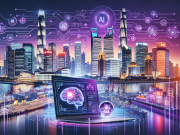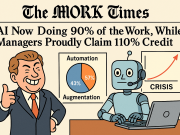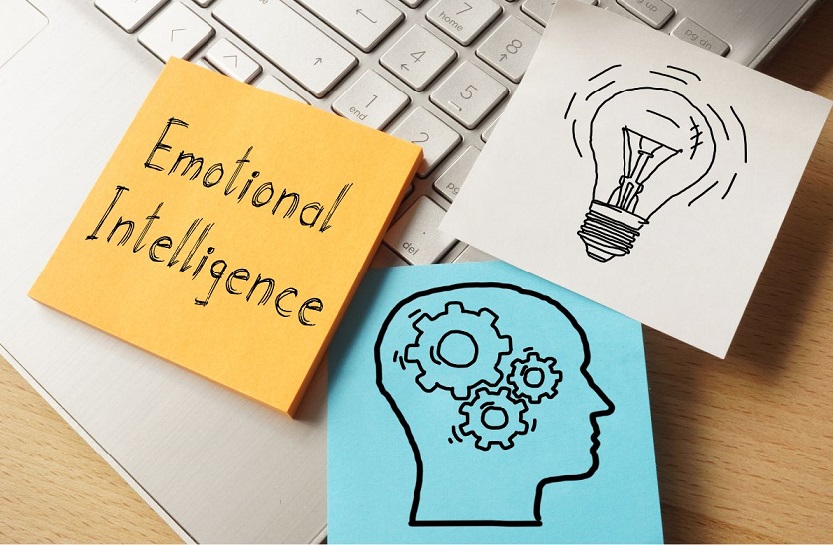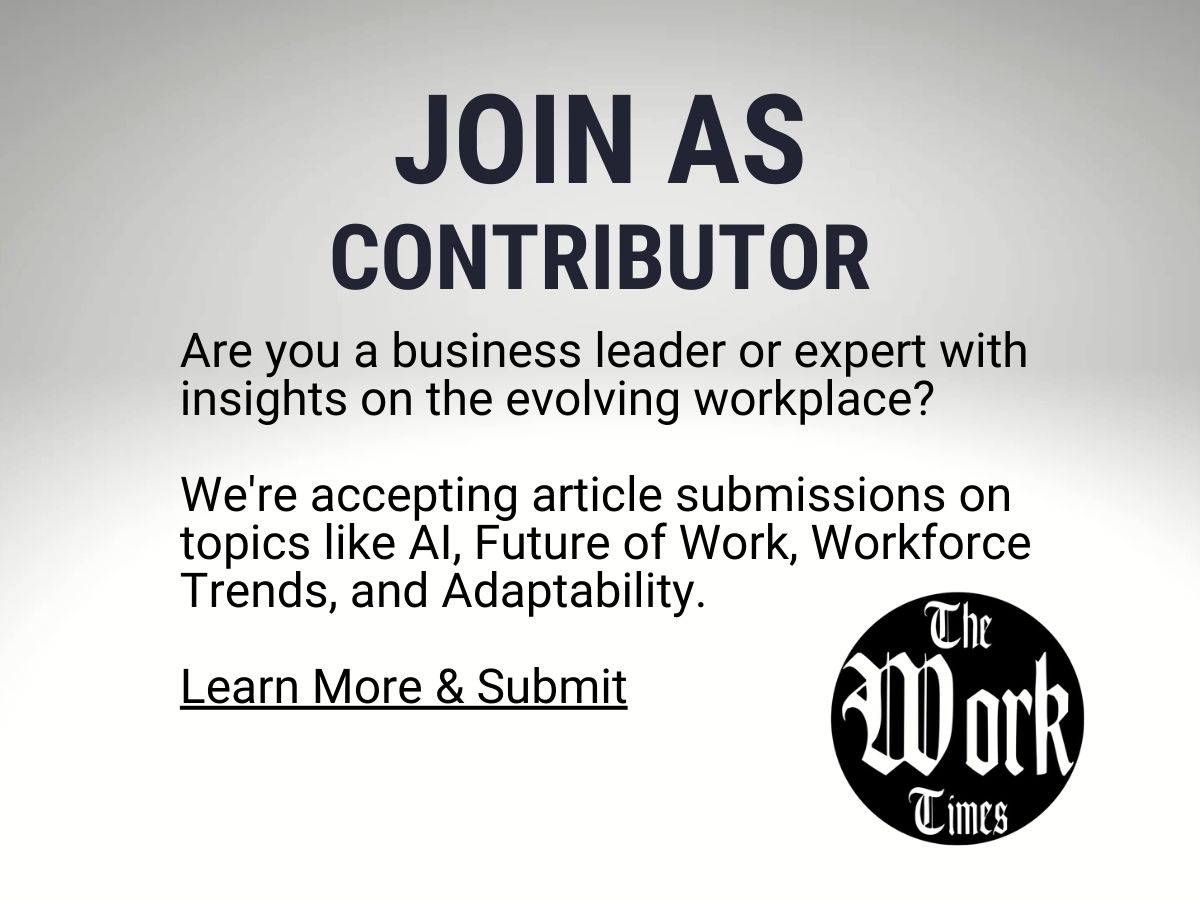Exploring How Empathy and Communication Remain Irreplaceable Skills
As artificial intelligence (AI) continues to reshape industries and redefine roles across the global job market, the discussion around the future of work often centers on how AI will impact employment. While automation is expected to replace certain tasks, it also presents new opportunities for those who can effectively harness its potential. However, even in the face of such rapid technological evolution, there is a crucial area where AI struggles to compete: emotional intelligence (EI). This unique human attribute, which encompasses empathy, communication, and interpersonal understanding, is becoming more valuable in an AI-augmented workforce.
This article explores how workers can maintain a competitive edge by leveraging emotional intelligence, why it is irreplaceable, and how individuals can adapt to the evolving workplace by blending technological proficiency with emotional acumen.
1. Understanding Emotional Intelligence and Its Core Components
Emotional intelligence is the ability to recognize, understand, and manage our own emotions while also empathizing with others. The concept, popularized by psychologist Daniel Goleman, highlights five core components that are essential in any work environment:
- Self-Awareness: Understanding one’s emotions and how they affect performance.
- Self-Regulation: The ability to control impulsive behaviors and remain calm under pressure.
- Motivation: Being driven to achieve personal and organizational goals.
- Empathy: Understanding and sharing the feelings of others.
- Social Skills: Effective communication, collaboration, and conflict resolution.
While AI excels at processing data, predicting outcomes, and optimizing operations, these human-centered capabilities are uniquely resistant to automation. As such, developing strong emotional intelligence is key to future-proofing one’s career.
2. Why Emotional Intelligence Remains Irreplaceable
AI may be able to perform tasks such as data analysis, automation of repetitive workflows, and even some decision-making processes. However, emotional intelligence is inherently rooted in human experience, making it difficult—if not impossible—for machines to replicate. Here’s why EI is indispensable:
a) Empathy in Complex Human Interactions
AI lacks genuine empathy, which is a critical component of leadership, team management, and customer service. While chatbots and virtual assistants can respond to queries using programmed scripts, they cannot interpret nuanced emotions or provide support in emotionally charged situations.
For example, a healthcare professional with high emotional intelligence can provide compassionate care by understanding a patient’s emotional needs—something that goes beyond clinical diagnosis and treatment.
b) Creative Problem-Solving
AI systems can analyze patterns and generate recommendations based on data, but they are limited in their ability to think creatively or apply contextual understanding. Workers with strong EI can navigate complex, ambiguous situations by incorporating emotional cues and diverse perspectives to develop innovative solutions.
c) Conflict Resolution and Negotiation
Resolving conflicts and negotiating mutually beneficial outcomes often requires understanding underlying emotions and motivations. Workers who possess high EI can identify and address concerns before they escalate, fostering a more harmonious work environment.
3. How Workers Can Leverage AI While Maintaining an Emotional Edge
Workers can enhance their value in the job market by learning to collaborate with AI while emphasizing their uniquely human skills. Here are strategies for leveraging AI while keeping emotional intelligence at the forefront:
a) Utilize AI for Task Automation and Data Analysis
AI can handle time-consuming and repetitive tasks, freeing up workers to focus on high-value activities that require empathy and interpersonal interaction. For example, sales professionals can use AI to analyze customer data and identify leads, allowing them to dedicate more time to building relationships with clients.
b) Develop Skills in AI and Digital Tools
To thrive in an AI-augmented workforce, workers should become proficient in using AI-powered tools. By understanding the capabilities and limitations of AI, they can better integrate it into their workflows and complement it with their emotional intelligence.
For instance, human resource professionals can use AI-driven recruitment tools to screen candidates, while relying on their intuition and emotional awareness during interviews to assess cultural fit.
c) Focus on Empathy-Driven Roles
As automation replaces routine tasks, roles that require emotional labor—such as caregiving, counseling, teaching, and creative leadership—will become increasingly important. Workers who excel in these areas can secure long-term career growth by demonstrating their ability to connect with others on an emotional level.
4. Adapting to Changes: Building Resilience and Flexibility
Adapting to a changing work environment requires resilience and a growth mindset. Workers should be prepared to continuously learn and evolve, leveraging both technical and emotional skills.
a) Embrace Lifelong Learning
The rapid pace of technological advancement means that workers must continually update their skills. In addition to learning new technologies, they should also invest in personal development by enhancing their emotional intelligence through self-reflection, mindfulness, and feedback.
b) Build Strong Networks
Interpersonal relationships play a crucial role in career success. Workers can benefit from building strong professional networks, which provide support, mentorship, and opportunities for collaboration.
c) Practice Emotional Resilience
In an AI-driven world, change is inevitable. Developing emotional resilience—the ability to bounce back from setbacks—is essential for navigating disruptions and adapting to new roles or industries.
5. How Organizations Can Support Emotional Intelligence Development
Employers have a significant role to play in fostering an environment where emotional intelligence is valued. Organizations can take the following steps to support the development of EI among their workforce:
a) Offer EI Training Programs
Training programs focused on emotional intelligence can help employees develop self-awareness, empathy, and communication skills. Workshops, coaching, and mentorship programs are effective ways to integrate EI development into organizational learning initiatives.
b) Recognize and Reward EI-Driven Behaviors
Organizations should acknowledge and reward employees who demonstrate high emotional intelligence, such as effective team collaboration, conflict resolution, and empathetic leadership. Recognizing these behaviors reinforces their importance and encourages others to develop similar skills.
c) Create a Supportive Work Culture
A supportive work environment that prioritizes psychological safety, open communication, and emotional well-being allows employees to thrive. By promoting inclusive policies and practices, organizations can foster a culture that values both technological and emotional contributions.
6. Case Studies: Real-World Applications of Emotional Intelligence in an AI Environment
a) Healthcare: Blending Empathy and AI in Patient Care
In healthcare, AI-powered diagnostic tools help doctors identify diseases and recommend treatments. However, the human touch provided by empathetic healthcare providers remains essential for delivering personalized care and addressing emotional concerns.
b) Customer Service: AI Chatbots vs. Human Representatives
Many companies use AI chatbots to handle routine customer inquiries, but human representatives with strong emotional intelligence are needed to resolve complex issues and ensure customer satisfaction. For instance, airline companies often rely on human agents to manage disputes or rebook flights during emergencies.
c) Leadership: Navigating Organizational Change
During periods of change, leaders with high emotional intelligence can effectively manage employee concerns and maintain morale. By combining data-driven decision-making with empathetic communication, they can foster trust and guide teams through transitions.
Conclusion: The Path Forward
As AI continues to evolve and reshape the workplace, emotional intelligence will remain a critical differentiator for workers. By blending technological skills with empathy, communication, and creativity, individuals can maintain their relevance and thrive in an AI-augmented world. Organizations that prioritize emotional intelligence development will be better equipped to navigate change, foster innovation, and achieve long-term success.
In this era of rapid technological disruption, the future belongs to those who can combine the best of both worlds—the precision and efficiency of AI with the warmth and understanding of human connection.




























